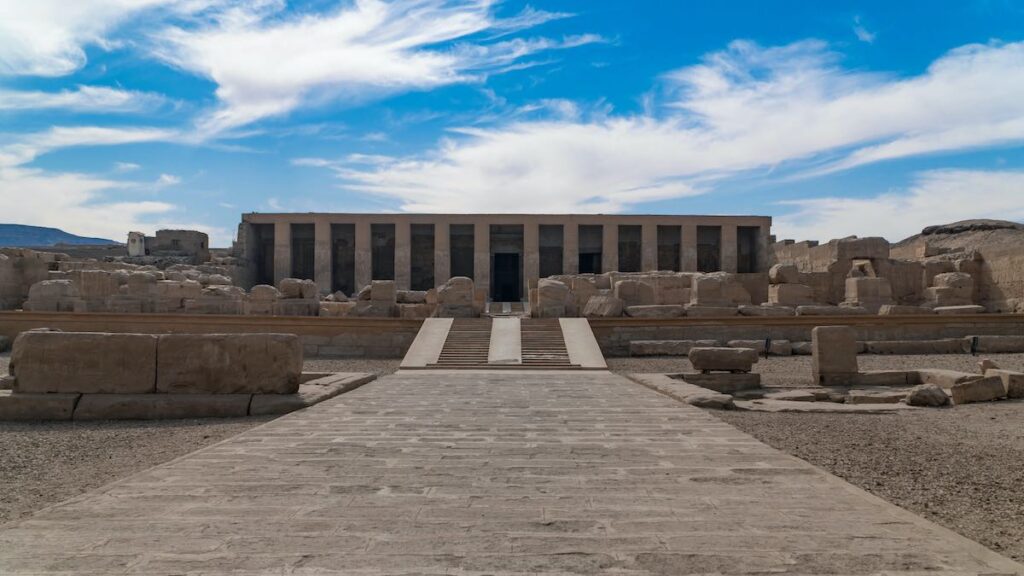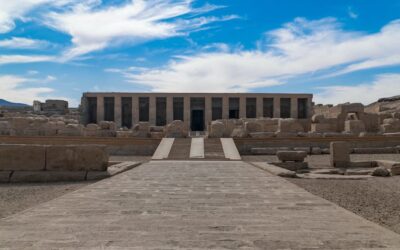
While perhaps not as well-known as other sites and temples that line the Nile’s banks, the Temple of Seti I at Abydos is still perhaps one of the most significant archaeological sites in Egypt. This ancient mortuary temple is located in of one of the oldest capitals and cultural centers of ancient Egypt, and is flanked by other archaeological wonders and temples such as Umm el-Qa’ab, a royal necropolis of early pharaohs. The city later became a place of pilgrimage for those who worshiped Osiris, god of death and resurrection, as it was thought to be one of his burial sites.
The temple itself was completed during the rule of Seti I’s son Ramses II, often known as Ramses the Great, between 1279 BC and 1213 BC. While overshadowed by his son’s rule, Seti I was a significant figure in building the power of Egypt’s New Kingdom (1550-1077 BC) and claiming dominance over its eastern neighbors in the Levant.
The temple consisted of a pylon that has since been lost, two open courts, two hypostyle halls, and seven shrines dedicated to various gods. Within the temple are detailed pictures showing the pharaoh’s transformation after death into the god Osiris. He is depicted among many different gods as well as in scenes from his military campaigns. Seti I’s father, Ramses I, is also honored in the temple’s reliefs.
Of the many etchings and paintings that line the walls of the temple, the most famous is what is referred to as the Abydos King List, which details the procession of past rulers of Egypt and provides Egyptologists and other historians with incredibly detailed information about Egypt’s history, including periods about which little archaeological evidence has survived.




